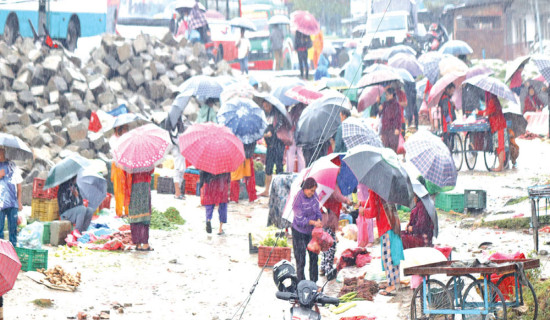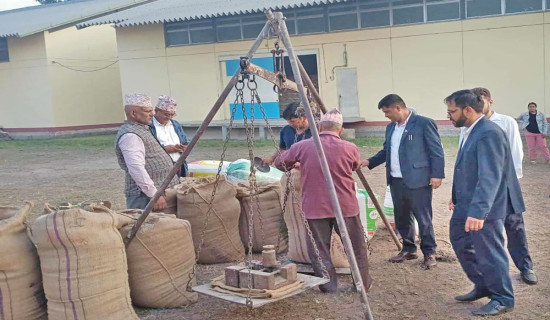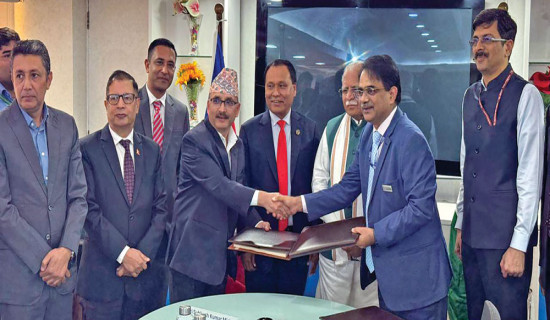- Sunday, 30 November 2025
Generating 28,500 MW by 2035 looks ambitious, not unattainable
Kathmandu, Feb. 11: Nepal's hydropower development remained frustratingly sluggish for more than a century. It generated a meager 750 MW since the establishment of the first-ever 500-KW Chandrajyoti hydroelectric power station in Pharping in 1911.
But it gathered momentum in the last decade, thanks to conducive government policy, increasing private sector investment, availability of foreign markets and shift to clean energy.
Nepali people were compelled to face 18-hour-a-day load-shedding until a decade ago. Nepal Electricity Authority (NEA) declared the nation as load-shedding-free only in May 2018.
However, in the past few years, power generation increased rapidly and installed capacity reached almost 3,000 MW. In the meantime, Nepal started exporting power to India in rainy season.
Encouraged by the progress made over the years, the government has set a target to generate 28,500 MW in next 12 years, and has been working to prepare bases to achieve the target.
Recently, Nepal signed a long-term power trade agreement with India to export 10,000 MW of electricity to India in the next 10 years. This agreement has pleased the private sector and encouraged domestic and foreign investors to invest in Nepal's hydropower sector.
In its latest Energy Development Roadmap and Action Plan, the Ministry of Energy, Water Resources and Irrigation has set an ambitious target of generating 28,500 MW of hydropower by 2035. Out of that, 13,500 MW of electricity is planned to be consumed within the country and the remaining 15,000 MW will be exported to India and Bangladesh. This target has led to a debate about whether it can be achieved.
However, hydropower experts have claimed that achieving the target of generating 28,500 MW of electricity by 2035 and exporting 10,000 MW to India in the next 10 years is possible.
However, they said that genuine efforts from all sectors, including government, ministries, private sector as well as banks and financial institutions were needed to achieve the target.
Former Secretary at the Ministry of Energy, Water Resources and Irrigation Suman Prasad Sharma said that 28,500 MW power could be generated in the next 12 years if the government facilitates policies for mobilising domestic and foreign investments and resolving the existing problems, which surfaced while developing a hydropower project.
Recalling a bitter fact that no hydropower project was completed in time in 112 years’ history of power generation in Nepal, he stressed the need for timely solutions to the problems related to land acquisition, forest and others, which surface while building hydropower and transmission lines.
According to Pradeep Kumar Thike, Deputy Managing Director of NEA, the government has set a target to generate 28,500 MW by 2035 based on the present scenario of power generation, the under construction projects, the mega projects advanced by the government and private sectors and the increasing interest of the foreign investors in developing clean energy.
The installation capacity of hydropower in the country has almost reached 3000 MW, out of that, around 2,214 MW electricity has been produced from the hydropower projects developed by the private sector.
About 131 hydropower projects with a capacity of 3,397 MW are now in the under construction phase. About 138 hydropower projects with capacity of 3,615 MW are in the stage of financial management and 258 projects with the capacity of 19,623 MW are in the various stages of construction by taking licenses.
Currently, construction process of large reservoir and semi-reservoir hydropower projects-- 1,200 MW Budhigandaki and 635 MW Dudh Koshi reservoir hydroelectric projects, 1,063 MW Upper Arun semi-reservoir and 417 MW Nalgad hydropower-- projects are advancing. Other hydropower projects, including 900 MW Arun III are also under construction phase.
Study on the 10,800 MW Karnali Chisapani hydropower project, which is a project of strategic importance, has also started.
Sandip Kumar Dev, Joint Secretary at the Ministry of Energy, Water Resources and Irrigation, said that the private sector and the government could produce more than 28,500 MW of electricity in the next 12 years.
He said that in the last one and a half years, an environment has been created to produce more than 1,000 megawatts of electricity, and in the next 12 years, we are progressing according to the target of producing more than 28,500 megawatts.
The government has started advancing the hydropower projects as a bilateral venture basis. Under this, Nepal government and Bangladesh government have expressed their commitment to developing the 683 MW Sunkoshi 3 Semi-Reservoir Project, he said.
Policy reforms essential
Due to various reasons, the construction work gets delayed which increases the cost of the project and this is what has discouraged the private sector from investing in the hydropower projects.
The government should pay attention to promptly solve the problems like felling trees in the project sites during the development of a hydro project and transmission lines to realise the ambitious target to generate 28,500 MW electricity and export to India, said Ganesh Karki President of Independent Power Producers' Association, Nepal (IPPAN).
He also suggested declaring the next decade as the energy decade to meet the target.
Karki said that the government should create a conducive environment by formulating necessary acts and regulations and making amendments to the existing policies to attract both the domestic and international investors to invest in hydropower before upcoming investment summit slated for April.
Stating that there was a compulsion to visit dozens of ministries and other government bodies to develop a hydropower while local levels are also there to create problems, he suggested managing a one-door system to complete all procedures to construct hydropower.
Joint Secretary Dev said that the government has also been facilitating issues related to land acquisition and the forest sector to expedite the project construction works.
The government has prepared a draft of the new Electricity Bill and the draft of the Bill has already been registered in the Parliament.
After the new Electricity Act is introduced, the private sector will be able to participate in the electricity trading, he said.
Private sector to generate 10,000 MW in a decade
IPPAN President Karki said that the long-term electricity trade agreement allowing to export 10,000 megawatts of electricity to India every day in the next 10 years is a historic and welcome move.
Since 1971, electricity has been exchanged between Nepal and India, and a Power Trade Agreement (PTA) was signed in 2014. Based on the same agreement, up to 600 megawatts of electricity was being exported to India for a short period of time for the last two years.
He claimed that the private sector of Nepal alone could generate 10,000 megawatts of electricity in 10 years.
However, to make it possible the government should adopt the policy that the banks and financial institutions should increase their investment in hydropower with due priority.
Likewise, the Power Purchase Agreement (PPA) which is currently being held by the Nepal Electricity Authority should be fully opened and licenses should be given to the private sector for electricity export, he said.
He said that the banks and financial institutions should increase investment in energy, and the government should announce more concessions for energy production.
He said, "It is impossible to export electricity without the involvement of the private sector and the private sector is ready to cooperate with the government.”
The capacity of domestic private sector, in terms of investment has increased and started constructing up to 300 MW project at present, he said.
Financing challenges
“There is demand for electricity in home and abroad and we, Nepal, have resources. So, if we are able to manage financing to develop hydropower from domestic and foreign investments, it will be possible to generate the electricity,” former secretary Sharma said.
It is estimated that by 2035, about 47 billion US dollar will be required for power generation, transmission and distribution lines. Out of the said investment, about US dollar 24 billion is proposed to be collected from domestic investment and about US dollar 23 billion from foreign direct investment.
Stating that such huge amount of resources cannot be managed by government and private sector of the country alone, he said that the government should create conducive environment for foreign investors to invest in Nepal by facilitating in FDI inflows.
“Proper financial management, environment management and market management are equally important to accelerate hydropower production and the government needs to pay attention to these issues,” he said.
Talking about the investment, Thike said that the government should mobilise remittance inflows in the hydropower along with the foreign direct investment as the local resources will not be adequate to generate the targeted power and build the distribution and transmission lines.
Boosting domestic consumption
The government needs to give priority to increasing the consumption of domestically generated electricity. To maximise the use of domestically produced electricity, the government has recently approved an energy consumption enhancement working plan, said Joint Secretary Dev.
At present, hydropower energy accounts only for about 8 per cent of Nepal's total energy demand. Nepal has a great chance to substitute the energy generated from fossil fuels used in transportation, irrigation and household sectors by hydropower energy, he said.
"Transport electrification strategies provide multi-fold benefits. The use of electric vehicles reduces the demand for petroleum products, hence reducing Nepal's reliance on imported energy resources. The use of electric vehicles has increased significantly, which could increase consumption of power," he said.
Organisations such as the Ministry of Energy, Water Resources and Irrigation, Nepal Electricity Authority and Alternative Energy Promotion Centre are playing a role in increasing energy consumption, and with the joint efforts of these agencies, the demand for electricity in transportation, irrigation and industrial and business sectors and household activities could be increased tremendously.
Nepal Electricity Authority has already been promoting the use of electric vehicles and working for the construction of transmission and distribution lines for increasing consumption, said Thike.
"We have projected to increase electricity consumption to 13,500 MW in 2035. The NEA is working to increase electricity consumption by promoting the use of electric vehicles, increase additional load to the industries and use of electric stoves," he said.
When per capita electricity consumption reaches 1,500 kWh by 2030 from existing 380, the target of domestic consumption of 13,500 MW electricity will be met, he said.
Expedite transmission/distribution lines
Demanding unnecessary compensation has been a big problem in transmission lines expansion.
Thike said, "No problem is in generation. But, there are many challenges for the completion of transmission lines. However, the NEA is fully dedicated for the generation, transmission and distribution lines and increase domestic consumption and export surplus electricity."
For electricity trade, Nepal and India have recently agreed on eight various topics to facilitate the exchange of electricity by enhancing the capacity of cross-border transmission lines between the two countries.
The 132 kV Kushaha-Kataiya Third Circuit, Raxaul-Parwanipur Second Circuit and Mainhia-Sampatia transmission lines connecting Nepal India have been completed and are operational, while the construction work of Butwal-Gorakhpur 400 kV cross-border transmission line has started.
It has also been agreed to proceed with the construction of Lamki-Bareli and Inaruwa-Purnia 400 kV transmission lines.
During the 11th meeting of Nepal-India Energy Secretary Level Joint Steering Committee, the two sides agreed to increase the capacity of the Dhalkebar-Muzaffar cross-border transmission line, which is operated as a first cross-border transmission line, to 1000 MW from existing capacity of 800 MW.
The JSC meeting instructed the JWG to finalise the investment modality to complete the construction of two more 400 kV cross-border transmission lines—Inarawa-Purniya and New Lumki (Dodohara)-Bareli transmission line between Nepal-India by 2027/28 and 2028/29 respectively. And all these projects will facilitate to export 10,000 MW power to India.




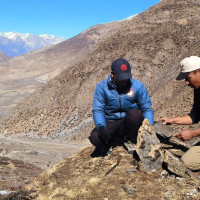
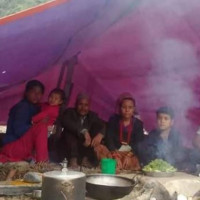
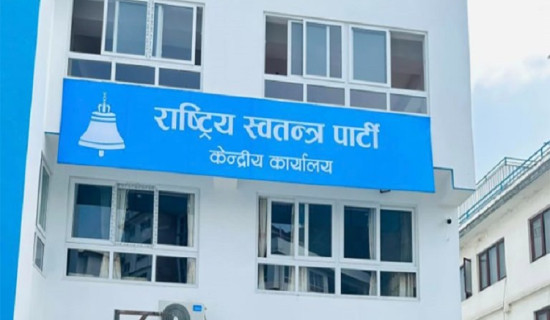

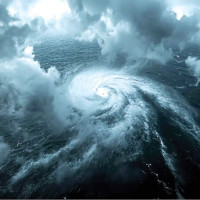

-original-thumb.jpg)

